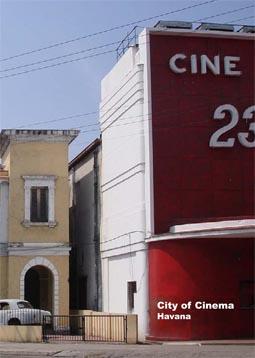City of Cinema

Students: Barbara Ramseier, Debora Bühlmann
Location: Group work in Havana
Date: June, 2007
Type: Research project, student work, city of culture, city of cinema
This theme is an investigation set between cultural history of Havana and an investigation into urban transformation. Havana is a city where many different cultural expressions had its peak moments: dance, music, entertainment, theater, cinema. Revolutionary era brought transformation to the urban cultural layer as well. It is interesting to show how the presence of theaters, cinemas, museums and others has changed over the years. For example, there was an explosion of museums once the historical centre started to be renewed in the ‘80s, while cinemas went down in their count after the 70's. This brings in an interesting difference of qualities for each period.
Overview of different cultures of Havana since the mid 19th century to the present day and influences that brought their rise or decline will be the first focus of the investigation. Further on, the investigation will focus on cinemas, as a specific urban layer and its transformation.
The XX century began in Havana and Cuba under domination by the US. Under American influence, during the ‘Republican Period’ the city grew: numerous hotels, casinos and nightclubs were constructed in the 1930s to serve Havana's burgeoning tourist industry. In this time Havana became a complementary paradise to US cities: prohibition in the US versus transgression in Havana, an exotic capital of gambling and corruption where gangsters and Hollywood movie stars were known to mix socially. Constructed during these lavish times of the first half of the XX century, remarkably there are 150-200 cinemas in Havana; an evidence of a rich Cuban cinema culture. They have a specific style of early modern American entertainment (pop) architecture, a pop-modernism. The present use of cinemas is varied; some of them still used as cinemas, some converted to other social neighborhood programs, some empty and shut down. Under revolutionary government, they were never ‘privatized’ for instance for residential purposes, as they were considered a cultural value. The popular cinema culture is now affected by the US embargo; many cinemas are replaced by sala video, often improvised, where groups from a neighborhood can watch or rent video films.
In the present-day context of Havana, in which colonial architecture captures much more attention and investment than the modern one, this study will take an active position. Its goal is making of a cultural-architectural heritage guide for the somewhat forgotten City of Cinema.
Download the Book PDF

